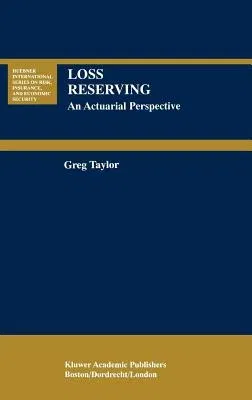Gregory Taylor
(Author)Loss Reserving: An Actuarial Perspective (2000)Hardcover - 2000, 29 February 2000

Qty
1
Turbo
Ships in 2 - 3 days
In Stock
Free Delivery
Cash on Delivery
15 Days
Free Returns
Secure Checkout

Part of Series
Huebner International Risk, Insurance and Economic Security
Part of Series
Huebner International Series on Risk, Insurance and Economic
Print Length
389 pages
Language
English
Publisher
Springer
Date Published
29 Feb 2000
ISBN-10
0792385020
ISBN-13
9780792385028
Description
Product Details
Author:
Book Edition:
2000
Book Format:
Hardcover
Country of Origin:
US
Date Published:
29 February 2000
Dimensions:
24.38 x
16.21 x
2.49 cm
ISBN-10:
0792385020
ISBN-13:
9780792385028
Language:
English
Location:
New York, NY
Pages:
389
Publisher:
Series:
Weight:
703.07 gm